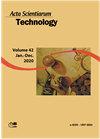ARLE GPS:一个帮助建筑师进行房屋空间规划的计算工具
IF 0.6
4区 综合性期刊
Q3 MULTIDISCIPLINARY SCIENCES
引用次数: 0
摘要
由于在设计的概念阶段没有完全清楚地确定和制定目标,因此平面图布局(FPL)被概念化为一个定义不清的问题。解决这个问题的方法是将不明确的问题转化为明确定义的问题。也就是说,要在设计过程的初始阶段就明确问题,这样架构师就可以很容易地了解需求和约束,制定目标,并在解决问题时应用他们可以管理的解决方案策略。这种转换使得用科学的方法解决问题成为可能,通过对决策问题进行数学建模,而不是通过绘图的方法,通过草图。它允许建筑师建立设计变量和房屋性能属性之间的关系,并了解解决方案的限制,或解决方案,可以找到,帮助他生成优化的解决方案。为了有助于解决这一问题,我们提出了计算工具ARLE GPS(几何规划求解器)。该工具作为房屋FPL的物理-生物模型。物理模型由复杂的数学模型构建,该数学模型为客观(数学)分析和评估、模拟、优化、评级和解决方案选择提供了一组度量。生物模型收集、储存、转录和检索FPL的遗传信息。物理-生物模型的功能允许构建和探索FPL的物理-生物设计空间,并建立其价值空间。它的运作是作为一种创新的行为工具在住房建筑设计教育体系中发生的。本文章由计算机程序翻译,如有差异,请以英文原文为准。
ARLE GPS: A computational tool to aid architects in spatial planning of house
The floor plan layout (FPL) is conceptualized as an ill-defined problem, due to the identification and formulation of objectives not being fully clear in the conceptual phase of the design. A solution to this issue is to convert the ill-defined problem into a well-defined problem. That is, to make the problem explicit, already in the initial phase of the design process, so that it readily allows the architects to know the requirements and constraints, to formulate the goals, and to apply solution strategies they can manage while solving the problem. This conversion makes it possible to solve the problem by a scientific method, through mathematical modeling of the decision-making problem, rather than by a drawn method, via sketches. It allows the architect to establish a relationship between design variables and house performance attributes, and to know the limits within which the solution, or solutions, can be found, aiding him in generating optimized solutions. In order to contribute to the solution of this issue, we present the computational tool ARLE GPS (geometric planning solver). The tool acts as a physical-biological model of the FPL of house. The physical model is structured by a sophisticated mathematical model, which provides a set of metrics for objective (mathematical) analysis and evaluation, simulation, optimization, rating, and solution selection. The biological model collects, stores, transcribes, and retrieves genetic information from the FPL. The functionality of the physical-biological model allows to construct and explore physical-biological design spaces of FPL, and to establish their value spaces. Its operationalization occurred as an innovative acting tool in the housing architecture design education system.
求助全文
通过发布文献求助,成功后即可免费获取论文全文。
去求助
来源期刊

Acta Scientiarum-technology
综合性期刊-综合性期刊
CiteScore
1.40
自引率
12.50%
发文量
60
审稿时长
6-12 weeks
期刊介绍:
The journal publishes original articles in all areas of Technology, including: Engineerings, Physics, Chemistry, Mathematics, Statistics, Geosciences and Computation Sciences.
To establish the public inscription of knowledge and its preservation; To publish results of research comprising ideas and new scientific suggestions; To publicize worldwide information and knowledge produced by the scientific community; To speech the process of scientific communication in Technology.
 求助内容:
求助内容: 应助结果提醒方式:
应助结果提醒方式:


